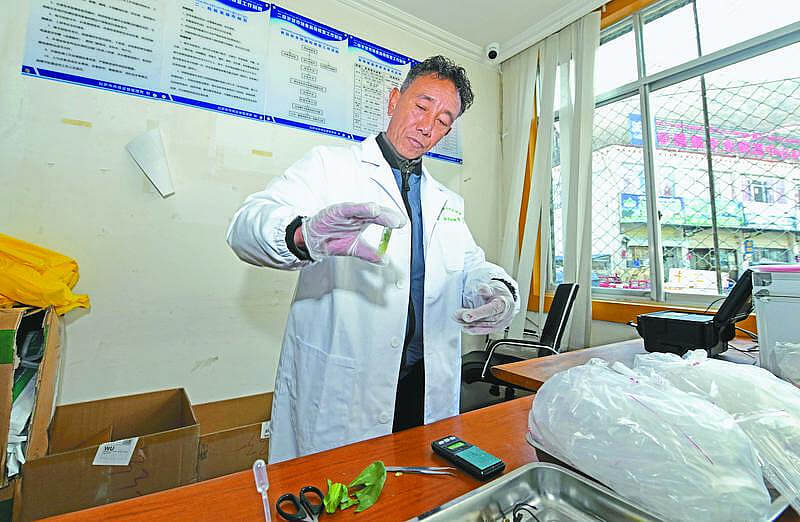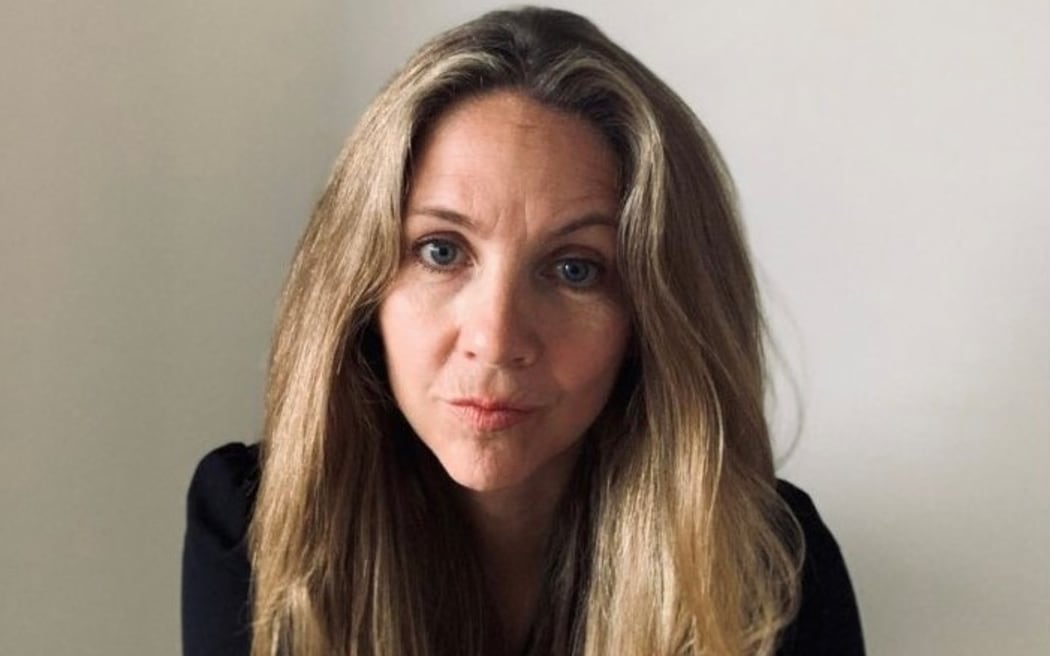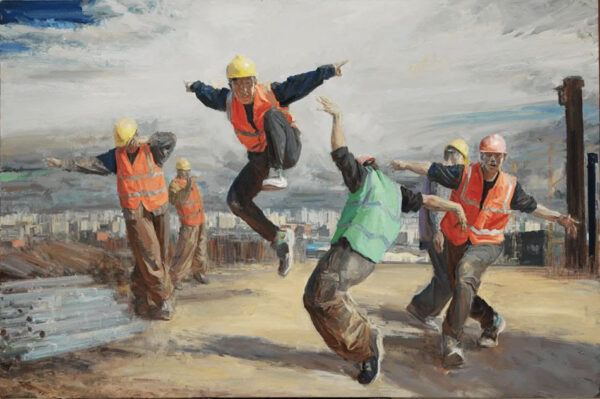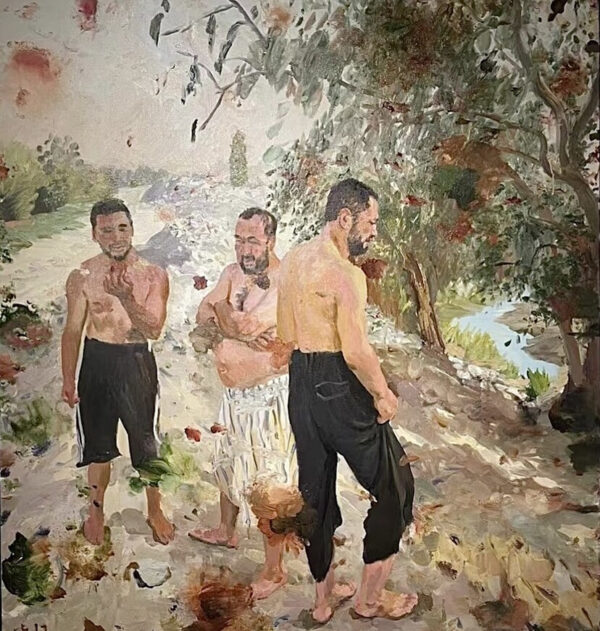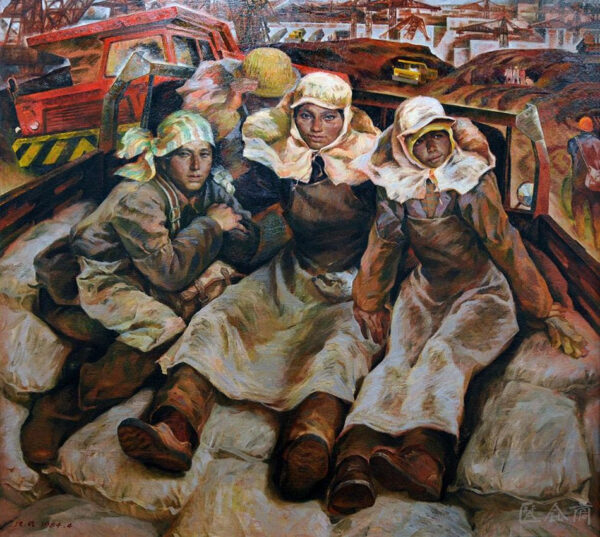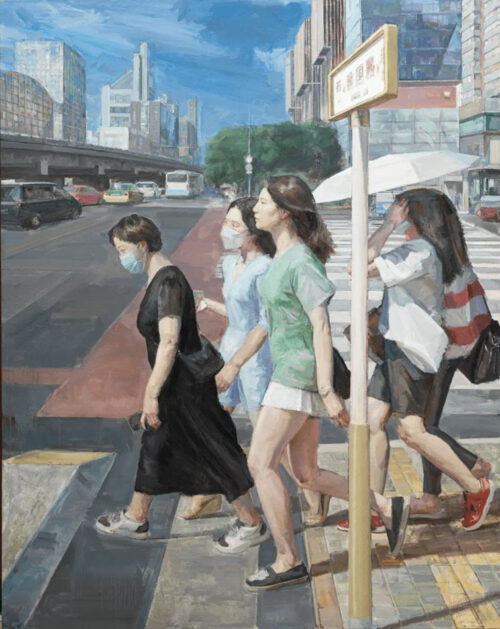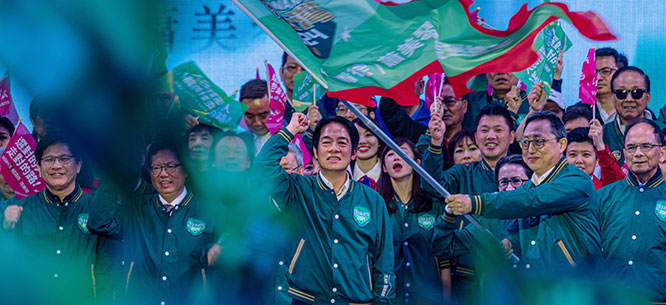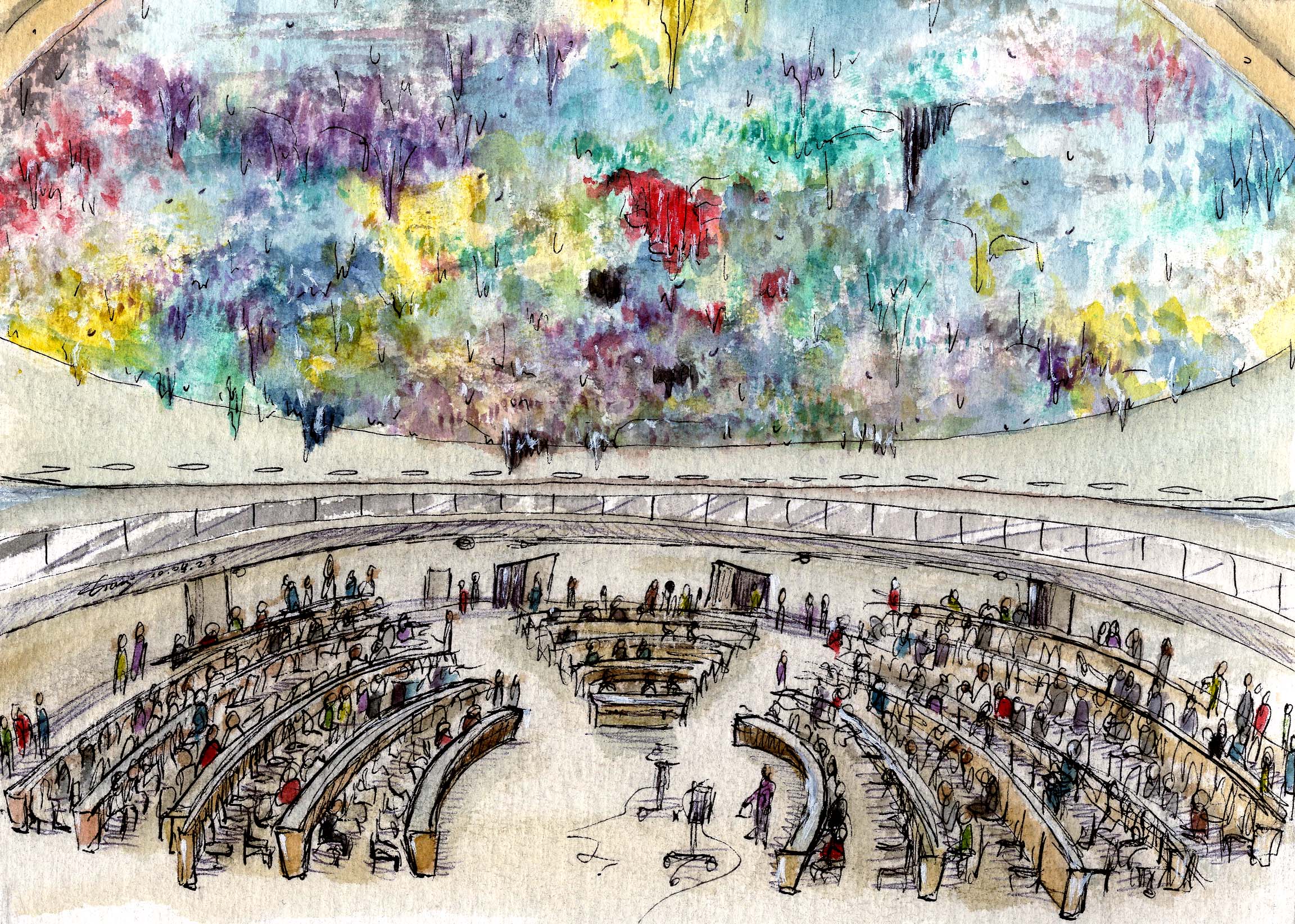At regular intervals the high representatives of the Allied Powers (West) congregate to commemorate the “kick-off” that led we are told to victory in Europe ending part of the hostilities in the Second World War. They meet on the often-cold beaches of Normandy, the western coastal region of France from which William the Conqueror led his hordes to decimate what became Great Britain and establish the monarchy and aristocracy, which until the end of 1947 comprised rulers of the most extended imperial state in history. There, the successors to the temporary autocrats of the US, Britain and France, engage in ritual self-congratulation and insincere piety. The D-Day amphibious landing of some 150,000 troops of the combined British and American Empires on those windy shores provides their alibi. Since the end of the war against the Soviet Union in 1989, the former adversaries are no longer the targets of self-righteous rebuke. The total forces of on-going occupation have wholly reconstructed Germany and Italy in the image of the victors. Moreover, the Eastern ally, if not shunned, has been repeatedly insulted on these occasions—at least since Vladimir Putin became head of the Russian Federation.
On or about 6 June 2024 will be the 80th anniversary of what Western schoolbooks and Hollywood propaganda films tell us was the decisive blow against the NSDAP regime in the German Reich. The continuing war through Ukraine is beyond irony. Meanwhile, the expected continuation of slaughter in Palestine will surely enhance the cynicism on those hallowed beaches.
However, the purpose of D-Day, the better late than never concession to the Soviet Union of a “second front” against Germany, has always been presented as evidence of the West’s magnificent contributions to defeating Germany for the second time in the 20th century. Subsequent Anglo-American occupation of first the rump Federal Republic and then the annexed Democratic Republic have assured that the Anglo-American history of the Second World War prevails in the culture of the vanquished. Even today to challenge that history in any public fashion can bring dire consequences.
Critical historians have repeatedly called attention to discrepancies in the official history as well as the on-going revisionism with its denials.[1] While even the suggestion that this official history may be inaccurate or incomplete can incriminate the critic as a so-called “holocaust denier”, attempts by the Russian Federation to punish the glorification of the fascist era have been opposed with scorn by those who ostensibly fought on the same side. The revisionary process reiterates or elaborates the view that the Soviet Union and the NS regime in Germany were essentially the same. The implication is that the Red Army defence of what was still the Soviet Union against German invasion was a crime while the collaboration of ultra-right wing Western Ukrainians with the German invasion—including formation of dedicated Waffen SS divisions like the Galizia—were heroic acts of national self-defence.[2] No later than 2014 this implication has been adopted as canonical history in the West, at least at governmental level. The bureaucratic authoritarian bodies of the European Union have fostered this process with attempts to equate the Soviet Union with the NS regime or at least to attribute the war to the acts or omissions of the Soviet leadership under Joseph Stalin.
However if blatant distortions directed at the defunct Soviet Union and its successor, the Russian Federation, are relatively well known and openly controversial, there are numerous matters regarding the Second World War which still deserve some scrutiny. Such scrutiny is not merely of academic relevance. The Second World War—along with its precursor the Great War—is the great sacramental myth upon which the Anglo-American Empire relies for its legitimacy, even among those who are either reluctant or embarrassed to accept it. Then as now a central issue is the concept of “war guilt”. It may be argued that this moral or religious concept derives from that most formative of eras in Western history—the Crusades. The Latin papacy, both for political and financial reasons, established the Christian doctrine of war for salvation of souls. The political reasons were obvious. Expanding the Latin empire required more than mendicant preachers it needed “boots on the ground”. Rome’s coup against Constantinople could only be sustained by military means. Moreover the control over the trade routes that passed through Asia Minor required armed occupation. Hence, the relatively under-populated peasant provinces had to be reaped for able bodies. Preaching the Crusades—recruiting foot soldiers and raising money—was complementary to the papal derivatives market aka the trade in relics and indulgences. For all the cant about Islam and its holy wars, the Latin papacy established salvation through organized mass murder as a firm institution in Western culture, a curse with us even today. A salvation model needs sin and guilt from which one is to be saved in the first place. Hence it was probably a natural development that empires built on the exploitation of the salvation model of militarism would need a moral template by which to judge their victories and defeats. If the Great War was the culmination of Western imperial competition then it is hardly surprising that morality would reach a critical mass, leading to the infamous “war guilt” provisions of the Versailles treaties.
Wherein could the “war guilt” actually be found? The diplomatic record, some of which has actually made its way into history books, shows that the French acted covertly to undermine German efforts to negotiate with the members of what became the Entente. The Wilhelmstrasse had successfully persuaded the Russian Empire to withdraw its general mobilization order and negotiate differences with Germany.[3] Thus, the Schlieffen Plan for the invasion of France via neutral Belgium became an imperative for the German high command. The French government would have been forced to negotiate to avoid a war with an industrially and militarily superior German Reich. Even if this French subterfuge is conceded, German militarism is claimed as unimpeachable evidence for German war guilt. A disingenuous Australian historian reasserted the naïve claim that the war was no one’s fault but the result of “sleepwalking” in Europe’s foreign offices. This attempt to sidestep the “war guilt” issue is self-serving. Rather than openly confronting the chain of culpability and the exculpatory evidence in favour of the German Reich, the “sleepwalkers” thesis removes the culpability issue from the table under the pretext of dismissing the “war guilt” question entirely.[4] This question of war guilt cannot be properly addressed without first considering the fundamental change that occurred between the “long 19th century” and the “short 2oth century”.
Political economist Michael Hudson summarized the “long 19th century” in a very different way than its most noted proponent, British historian Eric Hobsbawm. While Professor Hobsbawm describes the “long 19th century” as the evolution of liberal-enlightenment (somewhat democratic) values, Professor Hudson also following Marx describes it as the evolution of industrial capitalism toward socialism.[5] By that Professor Hudson described the direction of classical economics (also identified with the Enlightenment) as the struggle to eliminate the rentier or landlord class and its parasitic role in society.[6] Industrial adventurers would take capital and organize it in new ways together with labour to modernize society and provide goods and services appropriate to that modernization. Part of the surplus value would accrue to entrepreneurs but those resources which were natural, like land, water, air, minerals etc. would be developed as state monopolies so that the forces of production would drive society rather than the forces of extraction. This socialisation was in fact occurring despite the most vicious resistance by the landlord class and its ally the Church. According to Hudson, 1914 did not end liberal democracy but the drive toward socialism necessary for any kind of democracy, whether liberal or mass-based.
The Great War was not accidentally a war against Germany. It was a war launched against an increasingly efficient social-economic model that was out-producing the leading manufacturing country of the day and moreover delivering a higher quality of life to its citizens. This war started however before 1914 through economic and cultural war against both the German Empire and Austria-Hungary. German militarism was fed by the successful efforts by those who controlled British and French finance to obstruct the Berlin-Baghdad Railway. Not unlike measures presently taken to impede the Belt and Road Initiative, every effort was taken to block a land route from Central Europe to East Asia that would bypass the British merchant marine and Anglo-French ownership of Suez—with all that control implied for international trade.[7] In 1914, like in 2024, free trade and freedom of navigation were reserved to the Anglo-American Empire and no one else. Absent realistic commercial or diplomatic channels to establish Germany’s access to the world economy, the intensification of military preparation could have been no surprise. However objectionable armed force is, Germany’s application of it was neither unique nor without justification. Guilt, termed liability in civil law, not only presumes intent but also the capacity to act otherwise. The doctrine of force majeure or acts of God rebuts liability for acts performed under conditions the actor could neither foresee nor prevent. Hence official historians, as dedicated attorneys for the Establishment, must conceal or obscure evidence that an adversary was compelled to act or was denied any alternative to the act condemned.
The Second World War was a continuation of the British Empire—meanwhile all but formally amalgamated with the American Empire—to assure British domination of world trade and Britain’s exceptional status among nations. Rightly those summoned to Versailles to submit to further economic and social strangulation were to suffer the wrath of nationalists at home. Then as now, nationalists are evil if they are not one’s own. In the aftermath of this until then greatest known gratuitous mass slaughter of youth and manhood, the efforts to restrain competition and obstruct economic development led to the overthrow of the Romanov dynasty in the impoverished peasant empire of Russia. The Communist Party under Vladimir Lenin began a massive socio-economic transformation. This revolution was necessarily built upon the wholly inadequate and failed tsarist infrastructure and bureaucracy; a fact Lenin admitted would be a major obstacle to the country’s modernization. However this revolution threatened the permanent debtor status, which the Romanov’s century-long pawning of Russia’s wealth and economic capacity had created. Thus there was every incentive for the same bankers and cartels to support the counter-revolution with the help of the US, Great Britain, the Czech Legion and Japan. The withdrawal from the Great War had aggravated the Anglo-French front. To prevent the default on the battlefield and in debt service, the international community (the banking community that is) induced the US to intervene on the side of the British and French just enough to save impending bad debts and to prevent a negotiated peace among equals.
Economic warfare against Germany continued under the various extortion treaties designed for the public imagination to “punish Germany” for its war guilt. Thus an attempt to overthrow the servile Weimar regime was defeated by Allied support to the German military and the assassination of critical leaders. Not only were Karl Liebknecht and Rosa Luxemburg murdered by forces friendly to the Allies. Officially, Walter Rathenau, son of the family that ran Germany’s AEG electricity group, was assassinated by a right-wing anti-Semite. Most probably he was murdered for his negotiation of the Rapallo agreement between Germany and the Soviet Union by which the former would supply industrial equipment in return for raw materials.[8] Even the circumstances of Rathenau’s murder bear an uncanny resemblance to another conspiracy, the assassination of the Austrian Archduke Franz-Ferdinand in Sarajevo.[9] The more one examines story of economic warfare, assassination and ethno-nationalist conspiracy, the more obvious it becomes that the Open Society Foundations, NED and Otpor merely modernized established British covert foreign policy toolbox. Historians, or those who pretend to this function, as well as journalists have long been key performers in the mass deception that perpetuates “good war” mythology and its dramatic climax, war guilt.
However prior to the Great War, “war guilt” was not an essential part of the law of nations. In fact, one of the consequences of the treaties signed in Westphalia ending the first Thirty Years’ War was to de-moralize it. By recognizing the authority of rulers to define the religious regime of their respective states, a significant step was taken away from the salvation model of warfare. By the 19th century this could be captured in the dictum attributed to Carl von Clauswitz that “war is the continuation of policy with other means”. The realpolitik expounded in his classic Vom Kriege (1832) was a general’s assessment of the professional soldier’s role in his country’s public life. While it is understandable that a professional army officer would write about the relevance of armed combat in statecraft, this is not the same as preferring it to diplomacy or negotiated problem-solving. By withdrawing the religious or moralizing component war itself, von Clausewitz did not legitimate war as an amoral endeavour. Instead he placed the responsibility for morals and ethics on those who make state policy and hence decide whether it is to be pursued by force of arms. Thus the soldier is a servant of a moral or political order and not the one to define it. Any question of guilt or innocence has to be answered in the policy and those who make it not in the army per se.
On 27 August 1928, in Paris, the representatives of the high contracting parties, including the United States of America, the United Kingdom (and its dominions), France, Germany, Italy, Japan, Poland, Czechoslovakia, Belgium and Ireland, signed the General Treaty for Renunciation of War as an Instrument of National Policy, aka the Kellogg-Briand Pact. This much-ridiculed treaty, still an element of international law in force, ratified by the US and hence integrated into its national law, was remarkably simple.
Its main text comprised only two articles.
“Article I
The high contracting parties solemnly declare in the names of their respective peoples that they condemn recourse to war for the solution of international controversies and renounce it as an instrument of national policy in their relations with one another.
Article II
The high contracting parties agree that the settlement or solution of all disputes or conflicts of whatever nature or of whatever origin they may be, which may arise among them, shall never be sought except by pacific means.”
This treaty was signed, adopted, and ratified independent of other inter-governmental institutions such as the then extant League of Nations. Hence it became international law independent of any inter-governmental or supranational body. Its provisions were absorbed by the United Nations Charter but not superseded by it. By 1929 all the countries that were later to constitute the belligerents during the Second World War had ratified the treaty.
The Kellogg-Briand Pact transcended the realpolitik with which von Clausewitz and a century of militarism had been associated. Von Clausewitz removed the morality from the profession of arms and submitted it to the authority of the State rather than the generals. The 1928 treaty renounced that particular continuation of policy and created an obligation to negotiate and apply peaceful measures. It is unnecessary to demonstrate the ineffectiveness of the treaty in preventing war. Even when the treaty was signed and ratified contemporaries saw it is empty idealism. There were neither enforcement nor penalty provisions. However such objections lead to the absurdities of the current UN system by which the dominant founding member arrogates the sole right to punish “breaches of the peace” by waging war against those accused. It did not take long for this to occur. The US abused not only its veto power but also every other diplomatic and economic measure to obtain Security Council approval of its 1951 invasion of the Korean peninsula.
However, before such blatant bullying and deceit were applied to protect the US coup d’etat in Seoul and plans for “rollback” in China, there was an even more insidious deceit. The “good war” has meanwhile been shown to be far less good than Hollywood or schoolbooks have told us for the past eighty years. The unambiguous battle by the “good” against the “evil”, while necessary to preserve the crusading spirit of the Anglo-American Empire, is full of inconsistencies beginning with the funding of the NSDAP paramilitary forces needed to suppress political opposition before the elections in which Hitler’s party established a minority government with the help of the Latin pontiff. The formal abolition of the Zentrum ordered by Pope Pius XI eliminated the largest party in the German Reichstag and the only formal obstacle to Hitler’s appointment as chancellor. This detail is often omitted to support the erroneous assertion that the Germans elected Hitler. Once the government had been formed and the Enabling Act adopted to eliminate constitutional limitations on the government’s power, there was no shortage of support from American and British cartels. Well before the orders for Operation Barbarossa were given, Hitler’s government and rearmed military was being used as a cut-out for Britain’s war against the Spanish Republic. The minutes of Hitler’s meeting with Franco in Hendaye indicate that Franco appreciated Britain’s role in his victory while Hitler did not.
Carroll Quigley credibly argued that there was no “appeasement” on the part of Neville Chamberlain in Munich. Quite the contrary, Chamberlain in his capacity as a member of the so-called Round Table group, was intent on delaying any confrontation with the German Empire that would direct its attentions to the West. Moreover the strategic negotiations that led to the absorption of the Sudetenland, the occupation of Czechoslovakia and the annexation of Austria were generally accepted as legitimate remedies to the wholesale territorial seizures resulting from Germany’s defeat in 1918. There can be no doubt that negotiating the amalgamation of German-speaking territories from the defunct Austro-Hungarian Empire was entirely consistent with the stated policy of the famous Wilsonian “Fourteen Points”. These principles had until Munich never been applied to Germany or Germans. The subsequent portrayal of the Munich accords as surrender to an insatiable German dictator obscures Britain’s constant duplicity. At the same time it was conceding the legitimacy of German demands it was secretly encouraging the Czechs and Poles to oppose them, promising diplomatic and military support which never came. These features along the road to world war, while perhaps unfamiliar, are sufficiently incriminating to debunk British claims to innocence. Nonetheless claims to Germany’s “evil” role persist.
After years of suppression, testimony is emerging that supports the accusations that Franklin Roosevelt at least could have known that the Empire of Japan had planned and was undertaking an attack on America’s Hawaiian colony. Although Roosevelt was accused of deceit at the time of the attack, the story of the surprise and unprovoked Japanese aggression has remained the cornerstone of US history, not only of the Second World War but also for all its subsequent wars. Pearl Harbor itself became a metonym for fiendish surprise by which any adversary of the US is denounced as evil—and popularly accepted as such. Despite the suspicions harboured for decades, official history has maintained the ex post facto argument that even if the POTUS had known about the pending attack on the Pearl Harbor naval station, the evil of the Anti-Comintern Pact regimes, usually known as the Axis, is self-evident.[10] Feigning surprise was “a good lie” for “a good war”. However that is doubly dishonest. First of all, the horrors of the Second World War were only acknowledged in their magnitude after the Axis had been defeated. Defenders of the “so what” thesis must attribute clairvoyance to the POTUS not merely good intentions.
The “good lie” for the “good war” defence relies on two assumptions: one, the Anglo-American Empire was innocent of the cause of the war and two, it was genuinely surprised by the attacks that led to its participation in the hostilities. If the Anglo-American Empire was culpable in the start of the war, the element of surprise attack is deemed mitigating. In other words, the culpability accepted only extends to the part in real conflicts and controversies, not to the aggressive acts committed by Germany and Japan.
There is a technical issue, in itself minor, but if given due weight may also rebut the claims to innocence in causing the war. Here the much-maligned Kellogg-Briand Pact is quite relevant. The terms of the General Treaty oblige the parties to resolve problems by peaceful means and to renounce war. By alleging that one or more of the Axis powers committed surprise attacks the argument is made that it was the Germany or Japan which had breached its obligations under the treaty by failing to pursue negotiations in lieu of using armed force.
Here the actions of the Soviet Union take an entirely different colour than the one in which they are commonly depicted. The Treaty of Non-Aggression between Germany and the Union of Soviet Socialist Republics, the Molotov-Ribbentrop Pact, has been denounced by the official histories and by many who considered themselves members of the Left, or even a communist party. This treaty has been almost universally condemned in the West. The Establishment points to it as proof for its “Hitler equals Stalin” equation. The Left beyond the orthodox Communist Party followers of the time, saw it as Stalin willing to appease Hitler at the expense of the international workers’ struggle against fascism—however defined. Yet US Ambassador Joseph Davies (from 1936-1938) was quite clear when he said that the Soviet government pursued negotiations with Germany while France and Britain were essentially arming Hitler to attack the Soviet Union.[11] Davies, who had no reason to defend either Stalin or the CPSU, was assessing the diplomatic cesspool of British and French foreign policy.
Meanwhile in the Pacific, where the US had expanded its empire in 1901 to include practically every island that was neither French nor British between San Francisco and Manila, the US consistently supported Japanese expansion into the Asian mainland. For his contributions to this feat Theodore Roosevelt was even awarded a Nobel Peace Prize—proof that the award had been debased long before it was given to Henry Kissinger. Later US Secretary of State Dean Acheson would even admit that one of his principal assignments in Foggy Bottom prior to 7 December 1941 was to direct economic warfare against Japan. The US within the context of its established geopolitical doctrine of Manifest Destiny, under the pretext of the Open Door, was determined to succeed all European powers as the dominant imperial force in East Asia.[12] The United States was pursuing a covert policy, which could have no other effect than to provoke hostilities with Japan. The US supported the transfer of German settlements in China to the Japanese Empire at the end of the Great War. This further eased Japanese conquest of Manchuria, a logical move after the US had brokered Japanese annexation of Korea.
The second phase of the Chinese Revolution had pitted the right wing of the Kuomintang (KMT) against its enforced partners the Chinese Communist Party. Chiang Kai-shek clearly understood that he had the backing of the US against the Communist Party in the same way that the British backed Franco. Japanese invasion was barely opposed because Chiang saw the Japanese not unlike Hitler’s Legion Condor. Superior Japanese military force would help him to crush the Communists and reach an agreement with Japan for the benefit of his own party. Both Mao and Chiang were aware of this role that the US and Japan were playing in China’s internal revolution. US foreign policy and even war plans throughout the 19th century anticipated the possibility of war with the British Empire, its only natural enemy. Nonetheless, British tradition and education has long been the source of American foreign policy, diplomacy and duplicity. The New England elite, whether from Business or the Ivy League colleges, barely concealed their admiration for the British model of indirect rule and duplicitous, espionage-laden diplomacy. Using Japan as a wedge with which to dominate China risked the emergence of Japan’s own capabilities and interests. The Second World War would determine which country’s power would define the Asia-Pacific half of the world, for a while at least.
Already on the eve of the attack on Pearl Harbor there was at least one general officer on MacArthur’s staff who attempted to raise the alarm of a coming Japanese attack only to find that this was no surprise. Moreover, he apparently concluded that there was foreknowledge of which he was not privy. After the war, including three years in a Japanese POW camp, Edward P. King, Jr. wrote a memoir no one would publish in which he related his experience leading up to the attack. In Day of Deceit[13], Robert Stinnet documents what others have claimed but been unable to make heard.
The circumstances before, during and after the attack were so irregular they even deviated from the routines of peacetime naval duty. Leaving aside the suspicious circumstantial evidence that no efforts were made to prepare or execute adequate defence of the naval station, the key to the surprise myth relies on a technical issue which when discussed is minimized or obscured. The British and Hollywood have paraded the story of their cryptographic coup against the German Reich so that everyone has probably heard of Turing and ENIGMA. Less trumpeted is the fact that US Navy signals intelligence and the ONI had successfully broken Japanese ciphers and thus the US was able to monitor most of the imperial fleet’s cable traffic. Even today we only know a fraction of the capacity of signals intelligence work since “national security” would be jeopardized were the extent of surveillance actually known. One need only ask Mr Snowden or consider the fate of Mr Assange to recognize how little we actually know about the cryptographic work of the Anglo-American Empire and its government agencies and privatized surveillance system.
However, it is worth considering that both Germany and Japan were heavily exposed in what they apparently believed were coded communications. Since as has already been shown the Anglo-American Empire had targeted Germany and Japan long before the outbreak of hostilities they had worked very hard to incite, it is not far-fetched to imagine that the deciphering of Japanese and German communications was an on-going operation before 1939 or 1941. If the Anglo-American Empire was in full possession of meaningful, decrypted communications of its two primary adversaries, then it was also in a position to face those potential belligerents with diplomatic arguments for resolving the disputes at hand. Germany and Japan were both led by governments well aware of their relative weaknesses and material deficiencies in the event of war. They also knew that protracted war would exhaust their resources while their adversaries could rely on sources of supply practically immune from attack. There is no reason to believe that confronted with the exposure of their intentions and preparations they would not have launched attacks that could not be surprises.
This leads to the question that remains relevant today. If the Anglo-American Empire was not surprised by attacks but merely feigned surprise then they knowingly provoked a massive world war that not only could have been averted by negotiation but which they were obliged by international law to avert. By inciting Germany and Japan to wage war against them and concealing the knowledge that would have forced all parties to aver armed conflict, they actively inhibited negotiations before the outbreak of hostilities. Unlike the Soviet Union which demonstrably negotiated to the very end, not only with the regime in Berlin but with Berlin’s sponsors and promoters in the Anglo-American Empire, the Anglo-American Empire was in grave breach of its treaty obligations. As more honest historians and journalists have come to argue, the International Military Tribunal—only convened because the Soviet Union insisted on trials—should have included the British Empire and the United States of America in the dock, unindicted co-conspirators, for the breach of the peace and crimes against humanity they wilfully incited, in addition to those they perpetrated on their own account. Instead the crimes of “breach of the peace” derived from the Kellogg-Briand Pact were perverted, one might even say “encrypted” such that they continue to disguise the violations of the substance and the spirit of that noble act of modern diplomacy.
ENDNOTES:
[1] Among others Howard Zinn, A People’s History of the United States (1990), Jacques Pauwels, The Myth of the Good War and The Great Class War, reviewed by this author “’Romanticism and War’: Contextualizing a Theory of Interpretation”, Dissident Voice (15 September 2015). Although Zinn debunks much of the official World War 2 history in the US he completely omits – like many others- the Yalta agreements and the background they set for the Soviet Union in the post-war order. This is no doubt in part because Harry Truman repudiated the Yalta accords at the Potsdam Conference, a time when most people had no idea what had been agreed.
[2] Such was the “heroism” that the remainder of the Galizia division was packed from Italian POW camps and sent to Britain en masse at the end of the war from whence they spread throughout the Empire it seems.
[3] Metonyms for the various governments and foreign ministries: Wilhelmstrasse (Berlin), Quai d’Orsay (Paris), Foggy Bottom (Washington), Whitehall (London)
[4] See “Peculiar Admission in Award Winning Book” Dissident Voice (21 July 2014)
[5] Eric Hobsbawm, The Age of Extremes: The Short 20th Century 1914-1991 (1994)
[6] For articles, interviews, and bibliography of Professor Hudson’s political economic analyses see www.michael-hudson.com
[7] Summarized in F. William Engdahl, A Century of War: Anglo-American Oil Politics and the New World Order (2012)
[8] This story is told in Time Forward!, (Vremya, vperyod!), Valentin Kataev (1932) in English (1995)
[9] Markus Osterriede, Welt im Umbruch: Nationalitätenfrage, Ordnungspläne und Rudolf Steiners Haltung im Ersten Weltkrieg (2014)
[10] The term “axis” for the Anti-Comintern Pact, initially concluded between Germany and Italy and later including Japan, actually conceals the purpose of the Axis, one in which the Allies with the exception of the Soviet Union were entirely agreed. The Axis powers were explicitly agreed to combat the supposed expansion of the Soviet Union by means of the Communist International (Comintern).
[11] An important element of the treaty was the restoration of territory to each country that the Entente had allocated to the new Polish republic. Claims that this was conquest ignore the way in which the Entente imposed border and territorial realignments on Germany and the Russia (which was in the midst of civil war during most of the negotiations).
[12] For a thorough discussion of US imperial policy in the Asia-Pacific region see Bruce Cumings, Dominion from Sea to Sea: Pacific Ascendancy and American Power (2010)
[13] Robert B. Stinnet, Day of Deceit The Truth About FDR and Pearl Harbor (2001)
The post
Guilt by Decryption first appeared on
Dissident Voice.
This post was originally published on Dissident Voice.


